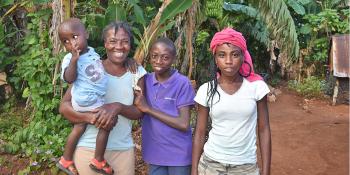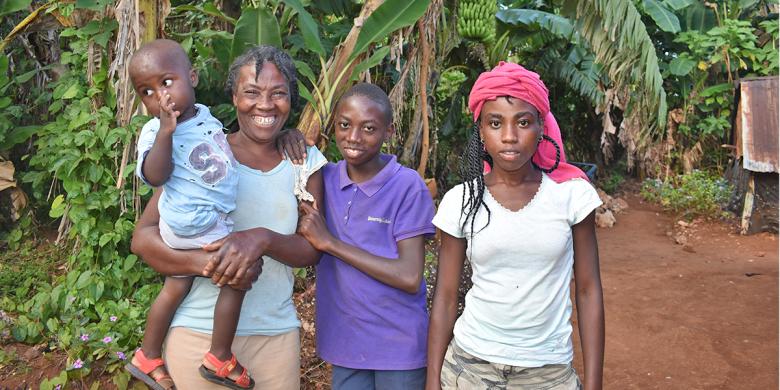
Hope in the southwest of Haiti
On the morning of Saturday, August 14, 2021, 49-year-old Onézire was sitting peacefully with the youngest of her six children in their home in southwest Haiti. At 8:30 a.m., however, a devastating magnitude 7.2 earthquake began leveling it to the ground.
“At first, I heard the sound and thought it was the wind. When I realized what was happening”— Onézire
“At first, I heard the sound and thought it was the wind. When I realized what was happening, I was so panicked I ran to the back door instead of the front, which was closer,” Onézire recalls. She was lucky enough to have escaped the house in time, but its walls could not withstand the quake.
Like the vast majority of her neighbors, Onézire had to sleep out in the open, despite the fact that Haiti’s hurricane season was in full force. With strong rains from Tropical Storm Grace pelting the island in the days following the earthquake, she endured wind, cold, heat and sun.
After the earthquake, a team from Habitat for Humanity Haiti mobilized to the region to help authorities evaluate the housing situation and start outlining a disaster response strategy. With more than 30 years of experience in the country, the organization had previously built or repaired 1,800 homes after Hurricane Matthew, which had destroyed residencies throughout the region in 2016.
Upon inspecting the homes built by Habitat in the area affected by the most recent earthquake, it found that 98% of them had not suffered significant damage and were safe for families to live in comfortably.
Following this analysis, Habitat worked with local authorities to launch a disaster response plan that included the distribution of emergency hygiene kits with soap, toothpaste, toothbrushes, masks, towels and other items.
In collaboration with ShelterBox and StartFund, Habitat then began to distribute more than 2,500 emergency kits to families such as Onézire’s in the most affected communities.
The kits included canvas tarps, tools, ropes, thermal blankets, solar lanterns, cook sets, sleeping mats, mosquito netting, water jugs, and other items.
In total, Habitat supported more than 15,000 people with hygiene and emergency kits as part of its response to the devastating earthquake.
Onézire and her family received one of these kits. As soon as it was in their hands, she took up the shovel and started to remove the rubble from her collapsed home.
“The items in the kit, like this solar lantern, were incredibly useful to have just after the earthquake”— Onézire
Later, with the wood foundation of her home still intact, she raised new walls with the canvas tarps provided in the emergency kit, giving her children a new home with walls that could shelter them through the night.
Habitat is now seeking funds to begin the reparation and construction phase in 2023, with the goal of building new, disaster-resilient homes, in which Haitian families can build a more resilient future.

Onézire and her children. ©Habitat for Humanity International